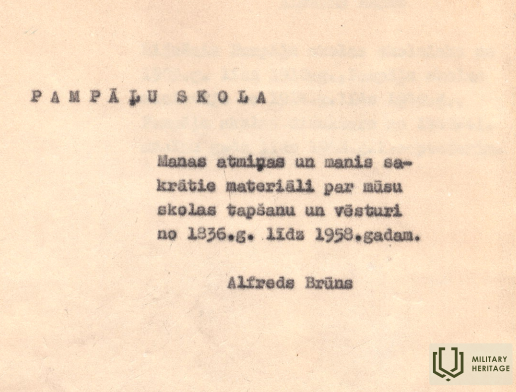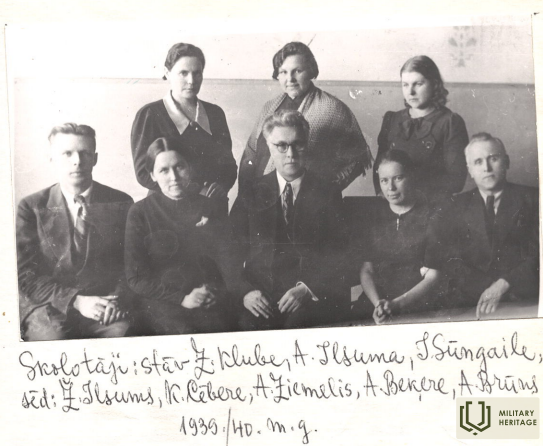The underground bunker of the German army division headquarters near the "Sirsniņi" house in Pampāļi
Alfred Brown's story about the German headquarters in the yard of his native house, where a German soldier led Alfred blindfolded under cover of night, not knowing that this house was his native house and Alfred knew every stone in the yard even with his eyes closed.
Former Pampāli School principal (until 1959) Alfred Brūns writes a letter to his half-brother Reinis Hartmanis in Great Britain in February 1961. Reinis H. sends the transcribed letters of A. Brūns to his son in Australia. By a happy coincidence, the notebook with the transcribed letters ends up back in Pampāli with Artūrs Hartmanis, who owns an impressive private collection of World War II artifacts found in the Pampāli area.
The first letter from Alfred Brown in February 1961.
[…] It's unbelievable that 16 years and 3 months have passed since the "Hearts" field remained empty and silent. […]
Of all the .. people, I was the last to stay on our side. For five weeks until 20.12.1944. I stayed alone in the Pampāļi school. I lived in the basement of the school and waited for the front to pass. I experienced many terrifying, terrible, dangerous days in these five weeks, while the school was on the 1st line of fire. The school was buried by both mine throwers and rifle bullets, the walls were riddled with tank shots, artillery, and airplane bombs, and so on for five weeks in one hell.
It finally got on my nerves too.
I was taken out before the hurricane and the burning of the school on December 20, 1944. On December 20, 23, and 24, I burned the school down. I saw the light from afar (in Luki) for two nights from the place. After that, I was a refugee in the Kurzeme bag until the capitulation in May near Ilzum.
When I was taken out of school by German soldiers, I was allowed to enter "Sirsniņa" at night with permission from the division commander to stay in Luķi.
It was a dark night when a soldier led me by the hand through the winding paths of the "Sirsniņi" farm, then we descended deep into the underground bunker, where it was light and where about 10 senior officers were gathered at a long table. The poor soldier could not have known how familiar this house and its farm were, and in the dark I knew every place I was led to.
This underground dwelling was built in the barnyard towards the ravine. When I returned in May and visited “Sirsniņas”, among many destroyed houses, a single red brick house stood proud and undamaged on the hill. Only one corner towards Pumpuri was completely torn out and had stood unrepaired for about 12 years. […]








